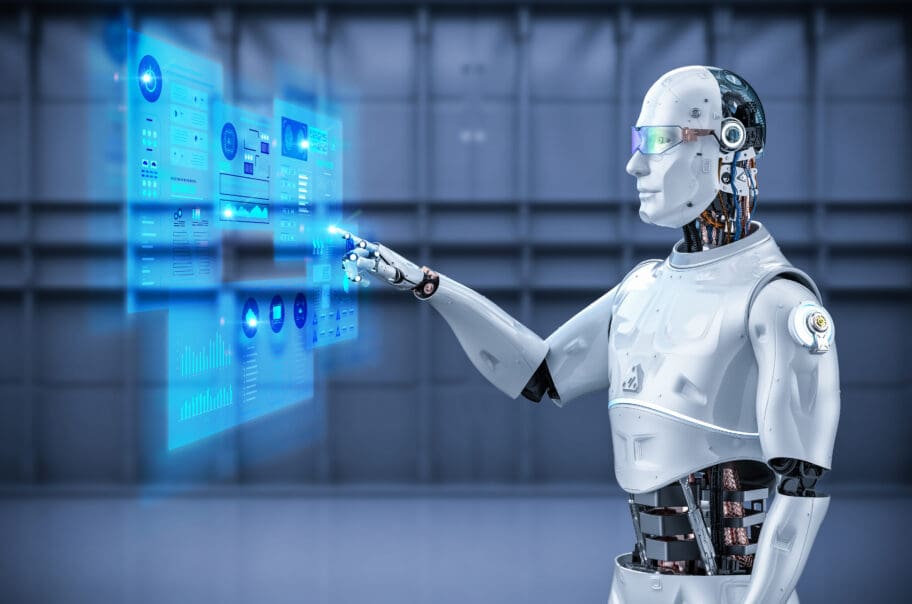Ever chatted with a conversational chatbot, or even an advanced chatbot, and felt like you're just going in circles? Despite the technology, even a contextual chatbot can sometimes leave you feeling this way. Frustrating, right? Well, that's where the magic of contextual chatbots (https://www.businessinsider.com) comes into play. They weave an engaging story on your website. These aren't your regular rule-based chatbots. No sir! These advanced and conversational chatbots are powered by machine learning and natural language processing (NLP). This gives them the ability to understand the context of a conversation, making each contextual chatbot adept at capturing customer attention.

Consider it this way - conversational chatbots are like that knowledgeable friend who remembers all your quirks and preferences in any user context, crafting a personalized story. For example, customer service has been revolutionized by these smart, conversational chatbots who remember your purchase history or preferred delivery times. These contextual chatbots offer tailored information based on your interactions. It's not just about a contextual chatbot answering queries anymore; it's about creating an engaging story and sharing information through conversation.
The Functioning of Contextual Chatbots
Data Collection and Analysis
Contextual chatbots are the new kids on the block. They're like your regular chatbots but with an extra layer of intelligence, providing contextually relevant information. So, how do they work? It all starts with data collection and analysis.
Think about it like a detective's job. Contextual chatbots collect clues (data) and analyze this information to solve cases (answer queries). Contextual chatbots act in the same way - they gather user inputs, previous conversations, and other relevant data. This could be anything from a simple "Hello" to complex queries, all set within a specific context.
Once collected, these pieces of context-related information go through rigorous analysis. In context, the bot tries to understand patterns, trends, and user behavior. For example, if a user frequently asks questions about a particular topic in a certain context, the bot will identify this as a pattern and use it for future contextually relevant interactions.
Natural Language Processing (NLP)
After collecting and analyzing data, comes the role of NLP or Natural Language Processing. Imagine trying to converse with someone who speaks a completely different language than yours - pretty difficult right? That’s where NLP steps in.
NLP helps contextual chatbots comprehend human language by breaking down sentences into smaller parts called tokens. These tokens help bots understand context behind every query or question thrown at them.
But that's not all! NLP also assists in generating responses that sound more human-like rather than robotic replies. It's like having an actual conversation with another person - making interactions smoother and more natural!
Integration with Existing Systems
Ever wondered how contextual chatbots know so much about you? Well, that's because they're integrated with existing systems like CRM or customer relationship management tools.
Through this integration, bots can retrieve context from past interactions or transactions done by users within the application itself! So next time when you ask your banking bot about your account balance or last transaction made – remember it’s pulling out this information from its integrated system!
Learning Process Through User Interactions
Learning is key for any AI-based system including our smart pals – contextual chatbots! Every interaction they have with users is an opportunity for them to learn something new.
They learn from their mistakes too! If they fail to answer a question correctly or misunderstand a query – they take note of these errors as learning points for future improvements.
It’s just like us humans learning from our experiences!
Role of Algorithms
Finally comes the role of algorithms which are essentially the brain behind these bots' decision-making process.
These algorithms enable bots to decide what response would best fit each unique conversation based on learned behaviors and patterns identified during data analysis phase mentioned earlier!
For instance, if you ask your weather bot "What's up?" instead of "What's the weather today?" - thanks to these algorithms it will still give you weather updates instead of replying "Nothing much!"
So there we have it folks! That’s how our intelligent friends aka contextual chatbots function in an easy-to-understand way!
Importance of Chatbots for SMB Owners
A Wallet-Friendly Customer Service Solution
Let's face it, customer service can be a real money pit. But what if there was a way to provide top-notch service without breaking the bank? Enter contextual chatbots. These AI-powered heroes are not just cost-effective, but they also take customer service to new heights.
-
They handle multiple queries simultaneously, something that would require an army of human agents.
-
Training costs? Forget about it! Chatbots don't need lengthy training sessions or expensive seminars.
-
No more paying overtime or holiday allowances. Chatbots work round-the-clock without complaining.
In essence, chatbots give you the best of both worlds - impeccable customer service without the hefty price tag.
24/7 Availability: The New Standard in Customer Experience
Ever tried reaching out to a business after hours and felt like banging your head against a wall? We've all been there. With chatbots, customers can get assistance anytime they want - be it day or night.
-
Imagine having a personal assistant who never sleeps or takes breaks.
-
Customers no longer have to wait for "business hours" to get their issues resolved.
This 24/7 availability not only enhances customer experience but also builds brand loyalty. After all, who doesn't love instant gratification?
Streamlining Business Operations Like A Pro
Running an SMB is like spinning plates while juggling fire. There's always so much going on! Here's where chatbots come into play:
-
Automating repetitive tasks: From answering FAQs to scheduling appointments, chatbots take care of mundane tasks so you can focus on growing your business.
-
Improving efficiency: By handling routine tasks, chatbots free up your team’s time allowing them to tackle more complex issues.
Simply put, chatbots are like having an extra pair of hands that help streamline operations and boost productivity.
Driving Sales Through Personalized Recommendations
Imagine walking into a store where the salesperson knows your preferences and suggests products accordingly. Pretty neat, right? That's exactly what contextual chatbot does online!
-
It learns from past interactions and uses this data to recommend products that align with users' preferences.
-
It upsells and cross-sells by suggesting complementary products during the purchase process.
In short, it transforms shopping from a mundane task into an engaging experience – driving sales in the process!
Gathering Valuable Customer Insights
Knowledge is power! Especially when it comes to understanding customers' needs and expectations:
-
Chatbots gather valuable insights through every interaction with users.
-
They track buying patterns and behavior which helps in tailoring marketing efforts effectively.
From identifying trends to understanding pain points - these insights are pure gold for any SMB owner looking to stay ahead of the curve!
By using contextual chatbot as part of their strategy, SMB owners can enhance customer experience while streamlining operations and driving sales – all without burning holes in their pockets!
Enhancing Chatbot's Contextual Intelligence

Quality Data: The Bedrock of Training
Chatbots, like any other machine learning technology, are only as smart as the data they're trained on. This isn't just about quantity - a bot could sift through terabytes of user interactions and still be none the wiser if the information isn't relevant or accurate.
Quality data is like gold dust for chatbot training. It provides the raw material that molds its contextual memory and shapes its understanding of user context. A chatbot with access to high-quality data can better comprehend and predict human behavior, making it a more effective tool for website interaction.
Take an e-commerce site as an example. The bot needs to understand what products are available, current prices, shipping options - all sorts of specific details that change regularly. If it's working off outdated or inaccurate data, customers will quickly lose faith in its ability to assist them.
Learning and Adapting: An Ongoing Process
A truly intelligent chatbot doesn't stop learning once it's been launched. It uses every interaction as a chance to improve its knowledge and hone its skills. Feedback loops play a crucial role in this ongoing process of learning and adaptation.
Think of feedback loops like having a personal trainer who watches your every move at the gym, correcting your form and suggesting improvements along the way. In much the same way, these mechanisms monitor how effectively the bot is meeting user needs and guide it towards better performance over time.
For instance, if users frequently ask about a particular topic that the bot struggles with, this signals an area where additional training might be beneficial.
Sentiment Analysis: Tuning into Emotions
Humans don’t just communicate with words – we also express ourselves through tone, body language, facial expressions... even emojis! For a chatbot to truly understand us humans in our full complexity, it must incorporate sentiment analysis capabilities.
Sentiment analysis is like giving your chatbot emotional intelligence. It enables bots to pick up on subtleties in language use that indicate how users are feeling – whether they’re frustrated or satisfied; confused or enlightened; angry or happy.
With sentiment analysis integrated into their programming codebase, bots can respond more appropriately to users' emotional states - offering reassurance when needed or celebrating positive outcomes together with users.
Multi-language Support: Expanding Horizons
In today’s interconnected world knowledge isn't confined by geographical boundaries - neither should your chatbot be! Multi-language support is essential for reaching out across linguistic divides and creating genuinely global platforms for interaction.
Imagine you run an international tourism website using a monolingual English-speaking bot while half your visitors speak Spanish or Mandarin? You'd miss out on engaging meaningfully with such significant portions of potential clients!
By enabling multi-language support in bots we break down barriers between cultures & peoples thereby enhancing their world knowledge & broadening their utility across diverse contexts!
Privacy & Security: Non-negotiables
Finally yet importantly comes privacy & security considerations which are paramount when dealing with data handling especially within sensitive fields such as healthcare finance etcetera where misuse can lead serious consequences both legally ethically speaking!
Your bot may have access enormous amounts highly personal information from medical history financial transactions relationship statuses so forth hence need ensure highest levels security measures place protect against breaches misuse unauthorised access!
Distinct Features of Contextual Chatbots
Understanding Complex Queries
The first feature that sets contextual chatbots apart is their ability to understand complex queries. They're not just keyword-based bots; they're designed to comprehend the intricacies and nuances of human language. This type of chatbot can process and interpret a variety of different types of questions, even those with multiple layers or embedded concepts.
For example, let's say a user asks, "What's the weather like in New York today, and will it be suitable for a picnic?" A simple bot might struggle with this question as it contains two queries in one sentence. In contrast, a contextual chatbot can understand and respond appropriately by providing the current weather conditions and suggesting whether it's good for outdoor activities.
This comprehension capability doesn't just apply to new queries either. Contextual chatbots are also able to reference past interactions with users, allowing for more personalized responses.
Personalized Responses Based on Past Interactions
Another significant feature is the ability to provide personalized responses based on previous conversations. Unlike other types of bots that treat each interaction as isolated incidents, contextual chatbots remember past exchanges and use them to inform future ones.
So if a user has previously mentioned that they prefer vegetarian food options during an earlier conversation about restaurants, the bot will remember this preference. The next time the user asks for restaurant recommendations, it'll suggest vegetarian-friendly places without needing any prompts.
These ways make interactions feel more natural and less robotic because they mimic how humans communicate – we don't forget previous conversations when we talk to people repeatedly!
Proactive Engagement with Users
Contextual chatbots aren’t just reactive; they’re proactive too! They don’t wait around for users to initiate conversations; instead, they engage users proactively based on triggers or predefined rules.
For instance, if a user has been browsing through products on an e-commerce site but hasn't made any purchases yet, the bot might send them a message offering help or recommending items based on what they've viewed. This proactive engagement helps keep users engaged and increases chances of conversions.
Capability to Handle Multiple Topics Simultaneously
One unique feature that separates contextual chatbots from other types is their ability to handle multiple topics simultaneously. They're capable of switching between different subjects within the same conversation seamlessly without losing context or understanding.
Say you're chatting with a bot about booking flights for your vacation while also asking about hotel recommendations at your destination. A regular bot might get confused trying to juggle these two separate topics at once. But not our trusty contextual chatbot! It can manage both inquiries effortlessly while maintaining clarity in its responses.
Seamless Transition Between Different Communication Channels
Finally yet importantly is their seamless transition between different communication channels - email, messaging apps or social media platforms - all while retaining context from prior interactions across channels. So if you start chatting with the bot via Facebook Messenger but later switch over email correspondence , there’s no need worry about having explain everything again from scratch!
Role in Customer Service & Business Communication
High Volume Inquiries, No Problem!
Contextual chatbots are like the superhero of customer service. They help businesses handle high volume inquiries efficiently without breaking a sweat. Imagine a busy shopping day with hundreds of customers needing assistance at the same time. It's like trying to juggle flaming torches while riding on a unicycle.

A human might get overwhelmed, but not our trusty chatbot! It can simultaneously attend to multiple customers, providing prompt responses and accurate information. This is vital in maintaining customer attention and ensuring their needs are met promptly.
For example, let's say you run a car dealership and have numerous customers asking about different car models' specs at the same time. A well-programmed chatbot can provide precise answers to each customer without any delay or confusion.
Speedy Gonzales Has Nothing on Chatbots
In addition to handling high volume inquiries, contextual chatbots significantly reduce response time. Customers nowadays want instant gratification; they don't want to wait around for answers. The faster they get help, the happier they are.
Think about it this way: if you're lost in an unfamiliar place and need directions immediately, would you rather wait for someone to hand-draw you a map or get instant directions from Google Maps? Exactly! Contextual chatbots provide that "Google Maps" level of speed in delivering responses.
Mastering Omnichannel Communication Strategy
Another game-changing role of contextual chatbots is facilitating omnichannel communication strategy. Customers interact with businesses through various channels - social media, email, website live chats - you name it!
With contextual chatbots in place:
-
Customers can switch between channels seamlessly
-
Maintain continuity in conversations
-
Have access to consistent information across all platforms
It's like having your personal assistant who knows your story no matter which path (or channel) you decide to take.
Enhancing Internal Communication
But wait! Contextual chatbot’s role isn’t limited just to external communications; it also enhances internal communication within organizations. Remember how annoying it was when your colleague forgot about that important meeting? Or when crucial information got lost in endless email threads?
Well, think of contextual chatbots as your organization’s internal postman (or woman!). They ensure important messages reach the right person at the right time – every single time!
Real-time Assistance During Online Shopping
Lastly, let’s talk about online shopping – everyone’s favorite pastime! Here too contextual chatbots play an indispensable role by providing real-time assistance during online shopping experiences.
Imagine walking into a physical store where there's no one around to assist you – quite frustrating isn't it? That’s exactly how customers feel when they shop online without any immediate help available.
However, with a contextual bot at hand:
-
Customers can ask questions about products
-
Get personalized recommendations based on their preferences
-
Receive real-time support during checkouts
This not only improves customer experience but also increases chances of conversions for businesses.
So there we have it folks – whether handling inquiries like a pro or acting as an efficient postman within organizations - contextual bots sure pack quite a punch!
Future Prospects: AI and Personalization in Chatbots
Predicted Growth Trends in the Chatbot Market
You've probably heard that chatbots are taking over the world, right? Well, maybe not quite yet, but they're definitely on an upward trajectory. It's like watching a rocket launch – slow at first but then it really blasts off!
-
According to Business Insider, by 2024, the chatbot market is expected to reach $9.4 billion.
-
A study from Juniper Research suggests that by 2023, retail sales via chatbots will hit $112 billion.
These numbers aren't just impressive; they're downright mind-boggling! So why are chatbots so popular? It's simple – they offer businesses a cost-effective way to automate customer service and sales processes. And with advancements in AI technologies (we'll get into that later), these bots are becoming more sophisticated and capable of handling complex tasks.
Increasing Role in Personalizing User Experiences
Remember when personalization meant adding your name to an email? Those days are long gone! Today's consumers expect hyper-personalized experiences tailored to their preferences and behaviors. And guess what? Contextual chatbots can deliver just that!
Imagine logging onto a website and being greeted by a bot who knows your purchase history or can recommend products based on your browsing behavior. That level of personalization isn't just cool; it makes shopping easier and more enjoyable for customers.
But it doesn't stop there:
-
In healthcare, chatbots can provide personalized health advice based on patient data.
-
In education, bots can tailor learning materials to each student's needs.
The possibilities are endless!
Potential Integration with Voice Assistants
"Hey Siri," "Ok Google," "Alexa"... Sound familiar? Voice assistants have become part of our everyday lives. But what if you could combine the convenience of voice commands with the power of contextual chatbots?
Think about it - you could ask your voice assistant questions like:
-
"What's my balance?"
-
"When is my next appointment?"
And instead of getting generic answers, you'd receive responses tailored specifically to you! Now that’s what I call futuristic!
Expected Advancements in Conversational AI Technologies
Conversational AI is like the secret sauce behind successful contextual chatbots. It allows bots to understand natural language, interpret user intent, and respond appropriately.
But as impressive as current technologies are, we're only scratching the surface:
-
Advances in machine learning could lead to more accurate understanding of user intent.
-
Improvements in natural language processing could result in more human-like conversations.
So buckle up! The future of conversational AI looks bright!
Future Challenges: Ethical Considerations
Now let’s get real for a moment – advancements often come with challenges too. As contextual chatbots become more prevalent (and powerful), ethical considerations will inevitably arise:
-
How do we ensure data privacy when bots have access to sensitive information?
-
How do we prevent misuse or manipulation?
-
What regulations should be put in place?
These aren’t easy questions but ones we’ll need to grapple with as we move forward into this brave new world of AI-powered conversation.
Wrapping it Up!
So, you see, contextual chatbots are no longer just a fancy tech gimmick. They're game-changers, revolutionizing customer service and business communication like never before. With their unique features and enhanced intelligence, they're making interactions smoother than a hot knife through butter.
But wait! The best part is yet to come. The future of these chatbots holds even more promise with advancements in AI and personalization. So why wait? It's time to jump on the bandwagon and give your business the edge it deserves!
FAQs
What are contextual chatbots?
Contextual chatbots are advanced versions of chatbots that use artificial intelligence (AI) and machine learning to understand the context of a conversation, thereby providing more accurate responses.
How do contextual chatbots enhance customer service?
They provide instant responses, handle multiple queries simultaneously, offer personalized interactions based on past conversations, which leads to improved customer satisfaction.
Why should SMB owners consider using contextual chatbots?
Contextual chatbots can automate routine tasks allowing SMB owners to focus on strategic aspects of their business. Plus, they can handle customer queries round-the-clock improving overall customer experience.
What makes contextual chatbots distinct from regular ones?
Unlike regular bots that follow pre-set commands, contextual bots understand the context of conversations and learn from past interactions. This allows them to provide more relevant and personalized responses.
Are there any future prospects for contextual chatbot technology?
Absolutely! With continuous advancements in AI and personalization techniques, we can expect these bots to become even smarter - capable of understanding complex queries and providing highly personalized experiences.

Article by
Titus Mulquiney
Hi, I'm Titus, an AI fanatic, automation expert, application designer and founder of Octavius AI. My mission is to help people like you automate your business to save costs and supercharge business growth!
